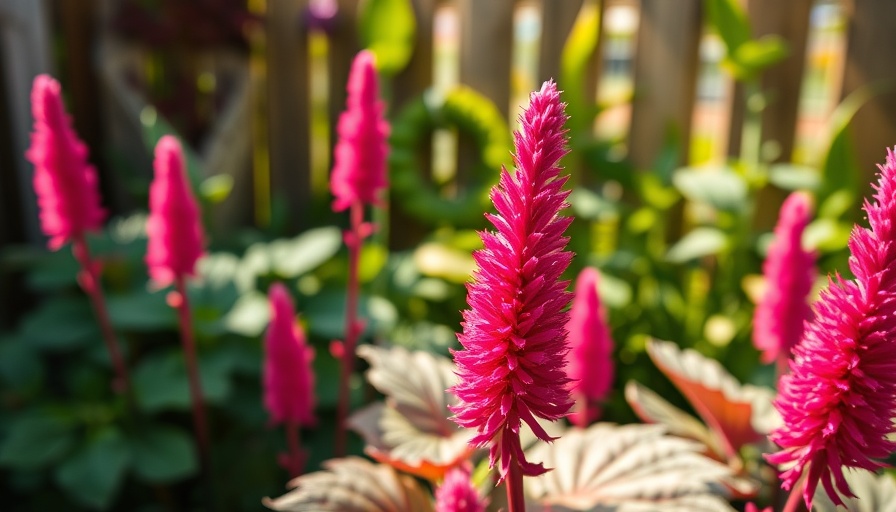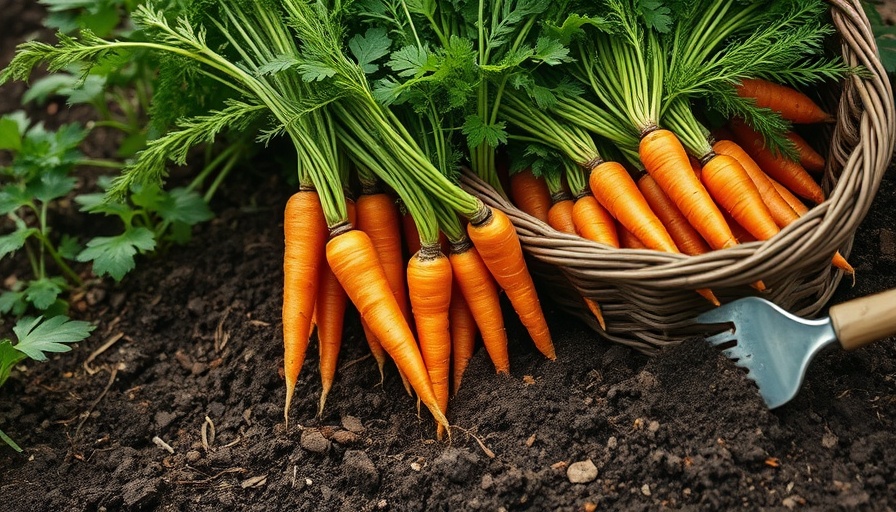
Discover the Allure of 'Hopi Red Dye' Amaranth
For gardening enthusiasts, few plants boast the rich history and versatile uses of the 'Hopi Red Dye' amaranth. This heirloom variety is not just an eye-catching addition to your garden; it also connects us to the heritage of the Hopi Tribe, which has cultivated this stunning annual for generations. With vibrant maroon leaves and striking red flower spikes, 'Hopi Red Dye' makes a statement in any outdoor space.
The Unique Benefits of Growing Amaranth
Amaranth is a remarkable plant that serves multiple purposes. Beyond its ornamental beauty, the seeds and leaves are edible and can be incorporated into various dishes. As a high-protein grain, amaranth is an excellent choice for those seeking wholesome, nutritious food sources. The vibrant flower spikes can be dried and transformed into a natural dye, lending both aesthetic appeal and practical uses to this garden favorite.
Ideal Growing Conditions for 'Hopi Red Dye' Amaranth
This hardy plant thrives in full sun and prefers well-drained soil, making it ideal for various backyard setups. Whether you're contemplating a backyard makeover or simply looking to beautify your existing landscape, consider adding 'Hopi Red Dye' amaranth to your garden planning tips. Not only is it low maintenance, but its adaptability also enables it to flourish alongside vegetables and herbs, enhancing the overall productivity of your garden.
Step-by-Step Guide to Plant 'Hopi Red Dye' Amaranth
- Site Preparation: Choose a sunny location in your garden, ensuring the soil is well-drained. Amend with compost to enrich nutrients.
- Sowing Seeds: Seeds can be sown directly in garden beds after the last frost, or started indoors about six weeks before transplanting outside.
- Watering Needs: Regular watering is essential, especially during dry spells. Ensure the soil remains damp but not waterlogged.
- Harvesting: Leaves can be harvested as needed, while the flower spikes can be collected once fully matured for dyeing or decoration.
Companion Planting with 'Hopi Red Dye' Amaranth
Integrating 'Hopi Red Dye' amaranth into your garden not only enhances visual appeal but can also benefit neighboring plants. It pairs beautifully with other colorful varieties, creating dynamic textures and visual interest in flower beds. Consider incorporating these companion plants:
- Basil: The aromatic herbs can thrive alongside amaranth, deterring pests and enhancing your culinary experiences.
- Tomatoes: Both plants appreciate similar growing conditions, making them perfect companions in your garden layout.
- Marigolds: These vibrant flowers can deter bugs and encourage pollination.
Inspiring People Behind the 'Hopi Red Dye' Amaranth
Jerad Bryant, a native plant grower, has dedicated his work to educating others on the value of heirloom crops and their role in local culture. By cultivating 'Hopi Red Dye' amaranth, he not only contributes to biodiversity but also revives traditional methods of gardening and dye-making.
Actionable Tips to Enhance Your Garden
This season, make the most of your outdoor living space by planting 'Hopi Red Dye' amaranth. Incorporate ideas for a fire pit or seasonal planting guides that complement the rich textures and colors of your garden. As you cultivate this unique plant, consider the ecological impact of your gardening practices. Engage in eco-friendly yard care strategies by utilizing natural fertilizers and organic pest control methods.
Whether you're looking to create a harmonious outdoor kitchen or simply desire beautiful flower bed layouts, 'Hopi Red Dye' amaranth can enhance your gardening experience while connecting you to nature and community. As you grow this special variety, you not only cultivate a stunning plant but also partake in the journey of preserving cultural heritage.
 Add Row
Add Row  Add
Add 




Write A Comment